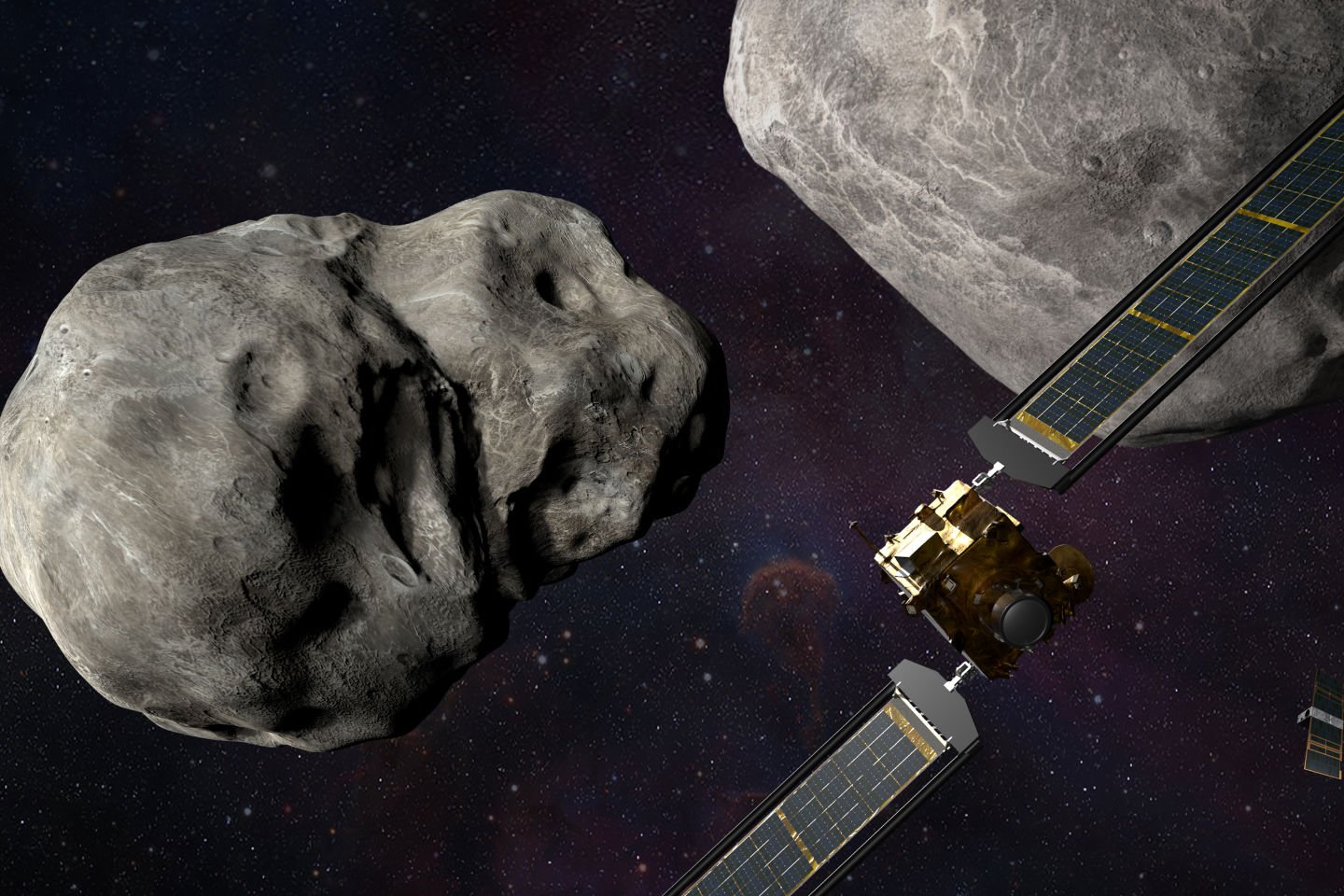Can NASA save the Earth from an asteroid strike?
It sounds like the plot of a disaster film, but scientists have successfully diverted a space object from its course, potentially making our world safer.

Key Points
NASA's DART mission smashed into a tiny asteroid last year.
More details revealed about the impact.
We now know more about how effective the technique would be on other asteroids.
Last September, we watched as a NASA spacecraft smashed into a small asteroid in space, diverting its path.
It was not heading for our planet, but others space objects have come our way in the past and almost certainly will in the future.
The DART (Double Asteroid Redirection Test) mission was hailed a success because a similar diversion to the one achieved might just save our planet from an asteroid hurtling in our direction.
We’ve now learnt that DART was even more of a smashing success than early results indicated.
The orbit path of the asteroid was reduced by around 33 minutes—five times greater than predicted.
Did you know?
- Small asteroids could be dangerous, but hard to spot.
- Our Solar System is full of debris left over from the early days of planet formation.
- About 31,360 asteroids are known to loiter in Earth’s neighbourhood.
Cameras on board the spacecraft sent data back to Earth right up until two seconds before impact with the asteroid Dimorphos.
The images revealed the surface of the egg-shaped moonlet was strewn with boulders resembling a rubble pile.
Meanwhile, the Hubble Space Telescope and a global network of citizen science telescopes captured stunning images of plumes of debris spewing up to 1,500km into space within the first three hours of impact.
The scientists estimated between 0.3 and 0.5% of the asteroid’s mass was ejected into space.
Over the next two to three weeks, the main dust tail fanned out and faded, giving scientists a glimpse of what happens when space rocks collide.
The mission was the first to test the “kinetic impact technique”— slamming a spacecraft into an asteroid—as a planetary defence strategy.
Scientists says the asteroid moved not so much from the impact of the spacecraft, but the transfer of energy caused by the release of material blasted off its surface.
“[This] put a recoil force into Dimorphos in the same way that when you fire a gun, the gun puts a recoil force into your hand or shoulder,” an expert explained.
“The kinetic impact causes an orbit deflection that is more than twice what would have been expected if there had been no release of ejectas [ejected material].”
Scientists say the larger momentum produced by debris blasting off the moon in the DART experiment was important for planetary defence.
This means the same-sized collision that was created by DART would prevent an asteroid strike on Earth for a similar-sized incoming asteroid with less warning time or prevent an asteroid strike by a larger asteroid with the same warning time.
Estimating warning time is important because an incoming asteroid would need to be smashed into while it was still far enough away from hitting the Earth.
For related reading: NASA, The Conversation, ABC
Image credit: NASA







